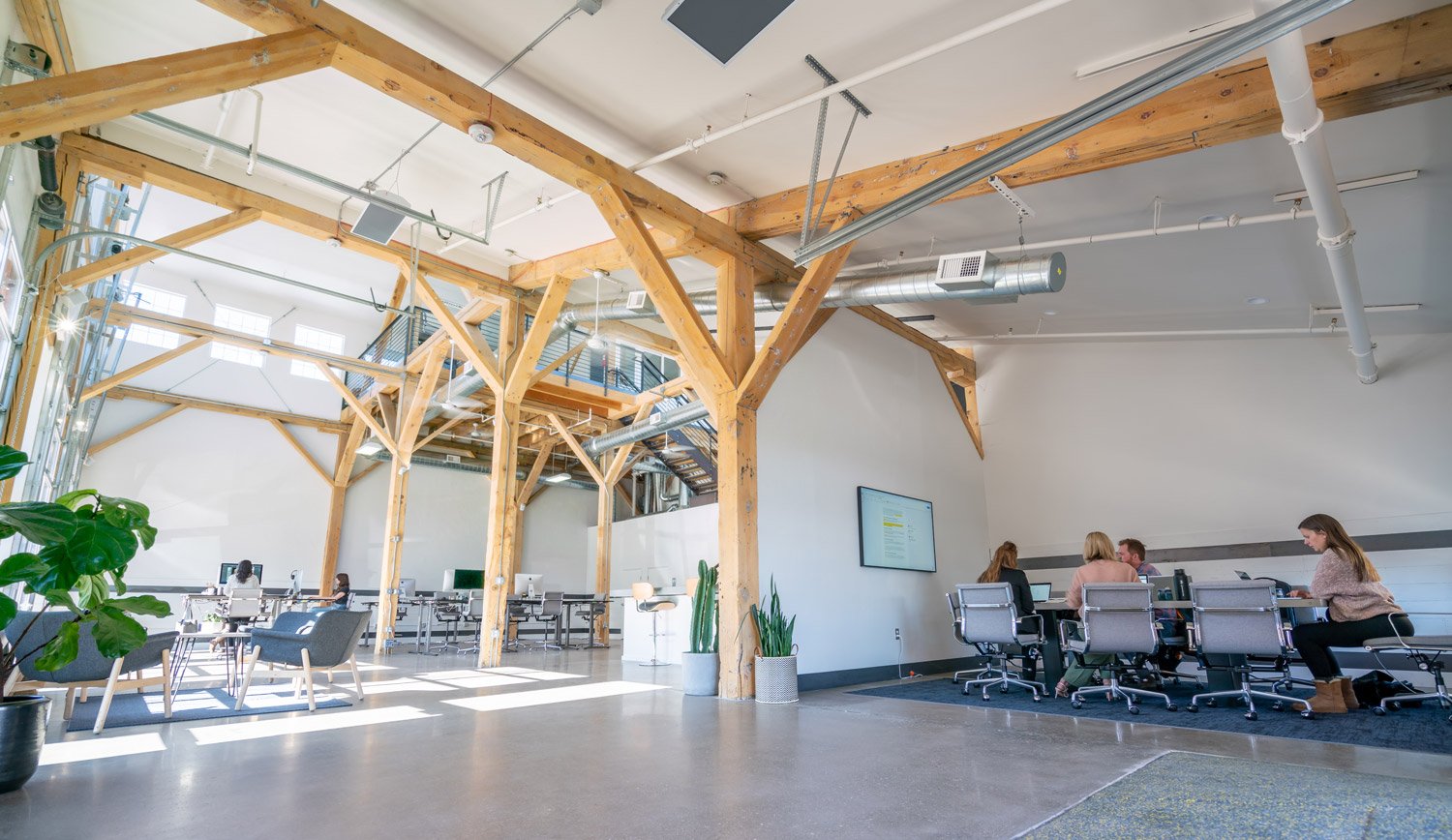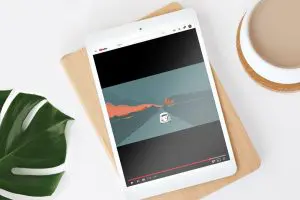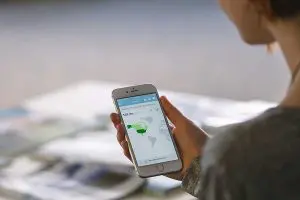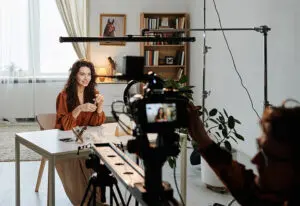
Marketing in the reset: COVID-19, health crises, and more
10-min 10-sec read, by Christina Brown
In a short period, human and market behavior has undergone massive changes due to the rapid onset of COVID-19, or coronavirus. From running out of stock on staples to the closure of schools to cancellations of major international events and mandates for business closures except for those considered “essential,” the COVID-19 pandemic has had a massive impact on the daily lives of just about everyone.
It’s now time to move beyond the ‘we’re here for you’ communications to the ‘do something’ communications that solve problems, meet needs, and help meet demand.
COVID-19 has a curve. The first involved panic, which brought about disruption to daily activities. Next came fear, which created isolation to homes, and faces glued to the news for information (humans very much dislike the unknown). And, following this, we’ll eventually see recovery, and with it, a new natural.
The new natural
No one is entirely sure what the new natural will bring. We hear hints that we could see a resurgence, we could have a new, more permanent addition to the seasonal flu, and we could beat the shit out of it, conquering until we have another threat. During which time, we assimilate what we’ve learned, continually growing stronger, more present, and more aware. As we’ve managed Google Ads this week and prepared client reporting, it’s time we published our first ‘do something’ thoughts on how small businesses and organizations can respond to COVID-19, today, tomorrow, and in the future––whatever it should hold.
Here are a couple of things we know. A) The market is dynamic. It’s rapidly evolving and affects businesses, their leaders, marketers and communicators, and digital experts. B) This is a time of disruption. The data we had and the theories of behaviors of our clients are no longer the same. What that means is businesses must make decisions, which requires organizational thinking about the present and potential futures. Also that our current situation involves humans; therefore, organizational and marketing decisions should first establish a meeting of human needs.
Where we’re at now
 Things are disrupted, but for the most part, businesses are managing. Companies have flocked to Zoom, digital meetings are now standard, and through the uncertainty, businesses are continuing their new days. There certainly have been plenty of layoffs in the digital and media fields. There have been key executives taking pay cuts, and there have been brands that have entirely uprooted their businesses to solve needs using their capabilities and skillsets. That said, we have more ahead of us that we need to prepare for. Some industries like D2C (direct to consumer) brands like oat companies are experiencing record-breaking weeks, fulfilling the demand for food. At the same time, drone component providers are helping to meet the needs of medicine delivery, surveillance, and more.
Things are disrupted, but for the most part, businesses are managing. Companies have flocked to Zoom, digital meetings are now standard, and through the uncertainty, businesses are continuing their new days. There certainly have been plenty of layoffs in the digital and media fields. There have been key executives taking pay cuts, and there have been brands that have entirely uprooted their businesses to solve needs using their capabilities and skillsets. That said, we have more ahead of us that we need to prepare for. Some industries like D2C (direct to consumer) brands like oat companies are experiencing record-breaking weeks, fulfilling the demand for food. At the same time, drone component providers are helping to meet the needs of medicine delivery, surveillance, and more.
Health and wellness see significant increases
Health and wellness, and home product D2C brands are pressed to keep up with demand. In fact, in the US alone, 32% have purchased more products in the health and wellness category, and 45% have purchased more cleaning supplies––we all see the sanitizer and gloves spots empty at our local market. For many, the growth has been so hard and fast that these brands are struggling to keep up with the demand.
Non-essentials or non-staples

Us humans tend to spend more of our disposable income on non-essentials (these are the Amazon late-night buys like clothing, gadgets, electronics, etc.) in times of economic strength. However, in less stable times like the present, we shift priorities to essentials; what we need versus what we want. Our wants are paused during uncertainty, so it makes sense that consumers are pulling back on non-essentials in the present time. But, don’t worry, as many of us fit into the discretionary, non-essential category, there will be light at the end of the tunnel.
Now more than ever, the world is looking for ways to connect its shared condition and our commonalities. This is one reason memes are on fire right now. We can all find some humanity in our situations, whether moms are drinking too much wine or kids are watching too much TV, or you can’t stand working from home one more day. Brands that reach directly to their consumers have a significant moment to connect their brand with their customers. Now is also a great time to get creative online.
Where we’re headed
Things will likely get worse before they get better. We all feel the battle now when we’re healthy. If and when we know others who are affected, it will get tougher, and we have to prepare for that.
Eventually, the crisis will become a non-crisis, and the economy, ideally spurred by the stimulus package, will see progress again. There is much to be seen as far as workers returning to work, kids returning to after-school or summer programs, and events taking place as we knew them. We need time and new data to see how customers respond in the new normal and what their buying cycles will look, e.g., will they be slower, faster, more discretionary? Only time will tell. These are some of the questions each of us as brands and businesses will have to ask ourselves and respond in action as time unfolds.
Steps brands and marketers can do today
Before looking at what we can do today as far as marketing during COVID-19, as brands and marketers, we must set the stage. Global pandemics and crises are not ideal times for increasing market share, growing profits, or making the situation advantageous to our brands. If we’re ideally situated or if we can pivot to help, fantastic. But it’s not the time to increase pricing respective to demand or saturate a market for self-benefit. Instead, as businesses and brands, we set up the opportunities that come after a crisis. Because, after all, we all have to move forward and meet needs. The ‘new’ normal is where challenger brands, or those that disrupt current offerings, can shine.
Take things one day at a time, while keeping a long view of possible scenarios, challenges, and outcomes. As we move into the next phase and more into the predicted peak of these phases, cultures will shift, and customer journeys will continue to change, because consumer behavior has and will continue to change. As businesses, our responses now will set the stage for the future. From this new stage, we can make decisions.
Here are five things to begin working on right now
1. Don’t stop communicating.
Web traffic is currently up over 50%. Thanks to social distancing, more people are spending time on social media and performing more daily activities online than ever before. This time does present an opportunity to reach your audience with the right tone and less noise. Your customers do need to know you’re operational, if you are, and any changes you’ve made to either hours or places of operation or service offerings, and how you can meet their needs. And if you need to pivot to do so, this is where you plan for that. They should also know what measures you’ve taken for health and safety should they continue to do businesses with you, and your plans for staying ahead in the future as it changes.
If your business is D2C, you’re in a good position so long as your supply chain is strong, and your user experience (UX) is set up for your users’ needs. If you’re not a consumable, pre-sales are an excellent option, as are delivery services (wine startups are thriving, thanks to moms). Your business may also be able to provide a line extension that allows people to stay productive and happy at home.
2. Don’t knee-jerk your marketing.
We’re in a time of increased consumer attention. Instead of cutting your marketing, redistribute it. Rethink the messaging, the customer, and the offering, but don’t stop. One reason not to is diminished supply. With other advertisers cutting their budgets, there’s less noise for your business to market against, and less noise for your consumer to see and hear you. This presents an opportunity for you with better rates and less ad activity overall. Companies should note that current market conditions mean rapidly different buying decisions. Find what those are and meet them there, or adapt and respond.
3. Redirect marketing budgets where it makes sense.
We’re seeing clients redirect marketing budgets away from tradeshows, travel, conferences, office rent, labor, and the last bit of traditional media like radio, since there’s less car time to tune out to it, and over to social media and paid search.
4. Focus on customers.
Many humans now have more time on their hands by working from home. If you can solve needs and keep clients happy, you can win them in the long run. We are seeing Google have slower response times to approving ads and Google My Business updates, and even Facebook has longer-than-usual review times, so keep that in mind with paid promotions and get creative with organic content; this may be the time where it can rise again. Try and find ways to incentivize your customers with perks, givebacks, and more. Remember, everyone is affected, so how can your business make things easier?
5. Find new opportunities.
How can you incorporate more digital, get your products online, or on Google Shopping? Can you create monthly subscriptions? Your business has an arsenal of digital tools to help connect you to your world and your customers. We will get beyond this. So what can we, as brands and businesses, do to either keep the momentum of our product sales now or regenerate sales once consumer confidence returns?
 Reframe offerings to what will be relevant
Reframe offerings to what will be relevant
Take into consideration that washing your hands with soap and water is more effective than hand sanitizer; however, we’ve seen empty sanitizer shelves for weeks while their sister, soap, sits crowded on shelves. This is because of a framing behind hand sanitizer. It’s cleaner, and “kills 99% of germs,” right? Brands, marketers and marketing agencies use framing to present less desirable aspects in a positive light or more desirable facts in a way that positively influences viewer opinion with the use of messaging, imagery, tone, sound, and language. After the panic phase, brands will need to consider the stories they can build around the products they provide that will drive consumer interest and sales. Here are some ways to do this.
Identify the pain points of your target audience
What do they need that’s not currently filled in their channels? Due to the unpredictability and scale of the current COVID-19 crisis, this, naturally, is next to impossible to do in advance, especially when none of us know when we’ll get back to the point of normalcy. We also don’t know the consumer sentiment and trust. Without this data, we’re shooting blind in predicting future pain points with great detail; however, we can build stories around different likely scenarios––One reason to keep a finger, always, on the pulse of your target audience as needs, expectations, and sentiments evolve.
 One way to monitor consumer sentiment is data
One way to monitor consumer sentiment is data
Fortunately, we’re [still] in a time with lots of data. We can follow sentiment on social media, we can track the customer journey, buying behavior, and activity on our online stores and ads, and plot trends in activity as time progresses to model what we think are our different future scenarios. Here’s an example. The COVID-19 curve flattens sooner than expected. That means plenty of consumers find themselves with too much food and cleaning products. That scenario presents an opportunity to frame a bunch of us with extra stuff. What are we going to do with it, and who could use it?
Create demand in the form of buzz
Word of mouth and peer review is still one of the most critical drivers of success. Studies show that consumers trust the opinions of their peers, and as much as 92% of us take the recommendation from others above and beyond what a brand says about itself. Once things get back to normal, and even now, if the offering fits, brands can look for opportunities to generate WOM, or word of mouth, around their products. Tip: exceed customers’ expectations, and this comes easy, even in a crisis.
Retain customers through retention marketing
We’ve all heard that it’s easier and cheaper to keep existing customers than to find new ones. This is true. New customers can cost you around five times more. During times like we see now, it’s potentially been easier to acquire new customers if your brand meets the needs of customers. Regardless, the costs and work of retention are complete, and a retention strategy is needed to keep them beyond their panic and once they’ve settled back into traditional routines, to the extent that’s possible when the curve flattens. How do you do this? Email is the cheapest and most effective way, considering, in this scenario, you have opted-in emails.
Your customers can get deals and coupons and be prime for future brand extensions, like your next couple of products, especially as they relate to their first purchase with your brand. An example of how to frame this is once we are freed to get outside again, we know that people will need to get out of their homes to enjoy interaction again. If your product or brand doesn’t offer direct to consumer products or services, it can collaborate with other brands to provide these experiences. Can your brand sponsor events consumers will be attending? If you’re a D2C brand, can you discount products and services that help them get outside? What’s a good fit with what they have now and what you can provide?
Encouraging new experiences
Brands that have provided valuable experiences during demand phases can use this momentum to create continued loyalty. One way to frame this is we know that during the crisis, there was a health-wellness focus, including arts and crafts and things that can be done indoors, even online learning for students. Once circumstances are back to ‘normal,’ some of these new habits or enjoyments will stick. Like, did a customer find they loved oat milk due to its long shelf-life? They’ll likely keep drinking it. Did they revive their passion for puzzles? Post-crisis, they’ll take a break, but puzzles may be something they continue to go to on rainy days. The key to these marketing efforts would be to keep brand messaging that encourages this experience in positive times.
Keep the conversation going
Just because the need calms down, if it does, doesn’t mean the conversation does. Brands can continue conversations that have already been started with their customers, including strengthening those relationships with more personalized communications. This might include video, live updates, and more. Studies show us that personalized experiences increase sales.
Boost brand awareness
When we all get back to our new normal, brands can use retention strategies, personalized marketing, and collaborations with other brands to add value to their consumers and strengthen awareness of the brand, not only for today, but for tomorrow and into the future.
Recent Posts
How to Rebrand Your Instagram for Better Engagement and Brand Recognition
Your Instagram presence can act as a beacon for brand recognition and customer engagement. It’s about painting a picture so compelling that your audience cannot help but be drawn to […]
Read MoreFrom Clicks to Conversions: The Science of High-Performing Digital Ads
The journey from interest to purchase is often paved with digital advertisements. However, not all digital ads are crafted equally. While some fade into the background, others command attention and […]
Read MoreBrand Consistency Examples That Will Make You Rethink Your Marketing Strategy
A consistent and strategic brand identity across all platforms is not just beneficial; it’s essential. By exploring real-world brand consistency examples, we uncover the immense power of maintaining a coherent […]
Read More3 Ways to Transform Blogs With SEO and Make Google Love Your Content
As marketers and business owners, our goal is to ensure the blogs we publish confidently stride into the spotlight of Google’s top search results. Achieving this requires great content, but […]
Read More



